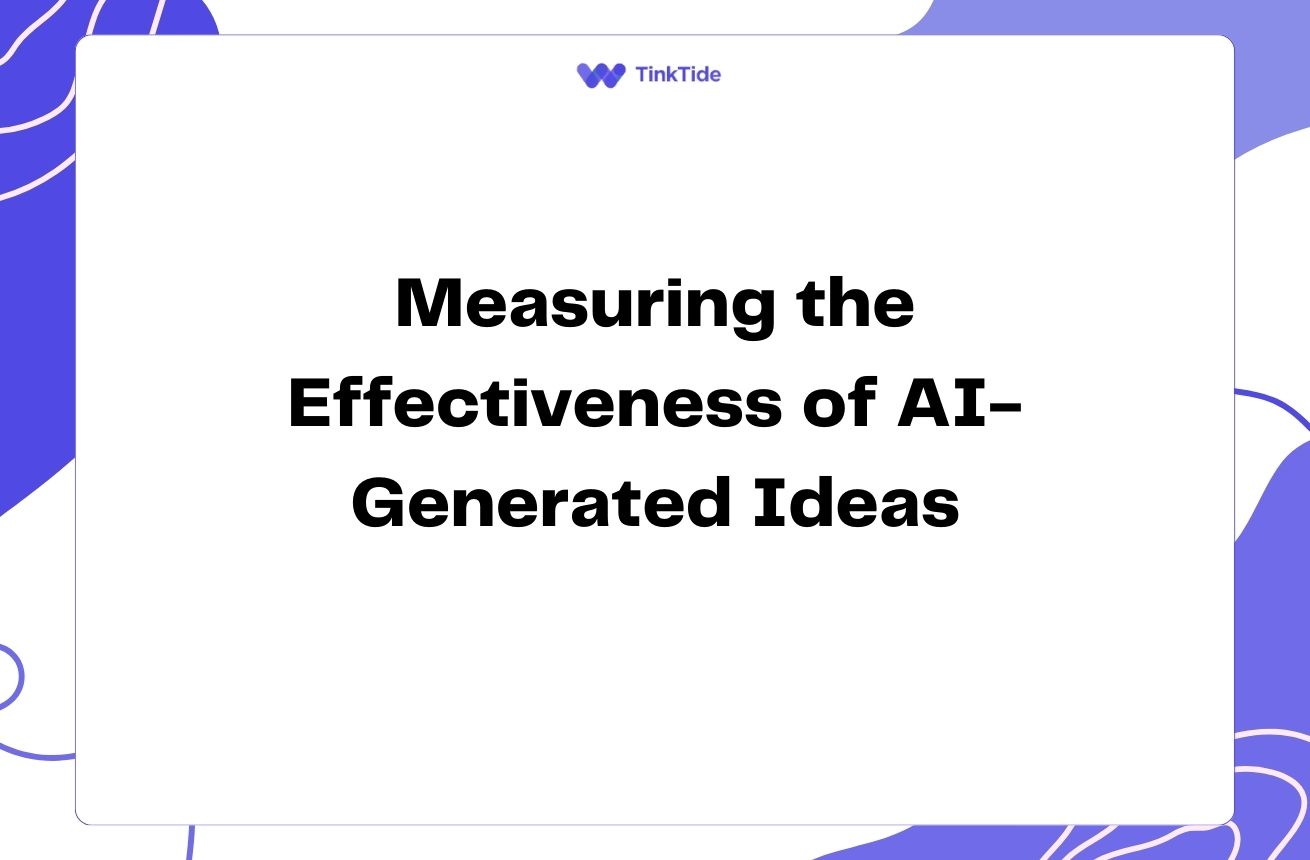Boost Team Collaboration with Mind Maps: A Visual Approach
The Power of Visual Thinking
Mind maps are powerful visual tools that can revolutionize the way your team collaborates and shares ideas. By representing information in a graphical format, mind maps tap into our brain's natural ability to process visual data more efficiently than text alone.
Research shows that visual aids can improve learning by up to 400%. This makes mind maps an ideal tool for enhancing team collaboration and idea sharing, as they allow complex information to be presented in an easy-to-understand format.
Mind maps work by organizing information around a central concept, with related ideas branching out in a radial structure. This layout mirrors the way our brains naturally connect and associate ideas, making it easier for team members to grasp and remember information.
By incorporating mind maps into your team's workflow, you can unlock new levels of creativity, improve communication, and streamline project management processes.
Benefits of Using Mind Maps for Team Collaboration
Implementing mind maps in your team's collaborative processes can yield numerous benefits:
- Enhanced brainstorming sessions
- Improved information retention
- Clearer communication of complex ideas
- Increased engagement and participation
- Better project overview and management
Enhancing Brainstorming Sessions
Mind maps excel at facilitating brainstorming sessions. Their non-linear structure allows ideas to flow freely, encouraging creativity and out-of-the-box thinking. Team members can quickly add new branches to represent emerging ideas, creating a visual representation of the group's collective thoughts.
Using digital mind mapping tools like MindMeister or XMind allows for real-time collaboration, where team members can contribute simultaneously, regardless of their physical location. This fosters a more inclusive and productive brainstorming environment.
The visual nature of mind maps also helps prevent 'groupthink' by allowing all ideas to be represented equally, encouraging diverse perspectives and innovative solutions.
By the end of a brainstorming session, your team will have a comprehensive visual map of all ideas generated, making it easier to identify patterns, connections, and potential solutions.
Improving Information Retention
Mind maps significantly enhance information retention among team members. The combination of visual elements, keywords, and spatial relationships creates multiple memory cues, making it easier for individuals to recall information later.
A study published in the Journal of Educational Research found that students who used mind maps scored higher on tests compared to those who used traditional note-taking methods. This principle applies equally to professional settings, where better information retention leads to more efficient work processes.
When team members can easily recall project details, timelines, and responsibilities, it reduces the need for constant reminders and follow-ups, streamlining overall team communication and productivity.
Encourage your team to review mind maps regularly to reinforce their understanding of projects and keep important details fresh in their minds.
Clarifying Complex Ideas
One of the biggest challenges in team collaboration is communicating complex ideas effectively. Mind maps excel at breaking down intricate concepts into more digestible components, making it easier for team members to grasp and discuss challenging topics.
By visually representing relationships between different elements of a project or idea, mind maps help team members see the big picture while also understanding how individual components fit together. This clarity can lead to more productive discussions and faster problem-solving.
For example, when planning a new product launch, a mind map can illustrate the connections between marketing strategies, development timelines, budget allocations, and potential challenges. This visual representation allows team members from different departments to quickly understand how their roles interact with others.
Use color-coding and icons in your mind maps to further enhance clarity and make different categories or priorities immediately recognizable.
Implementing Mind Maps in Your Team's Workflow
To successfully integrate mind maps into your team's collaboration process, follow these steps:
- Choose a suitable mind mapping tool that allows for real-time collaboration
- Introduce the concept to your team and provide basic training
- Start with simple projects to build familiarity and confidence
- Encourage regular use in meetings and brainstorming sessions
- Collect feedback and refine your approach based on team input
Overcoming Potential Challenges
While mind maps offer numerous benefits, you may encounter some challenges when implementing them in your team's workflow. Here are some common issues and how to address them:
1. Resistance to change: Some team members may be hesitant to adopt a new tool. Address this by highlighting the benefits and providing ample support during the transition.
2. Overcomplication: It's easy to get carried away and create overly complex mind maps. Encourage simplicity and focus on key ideas to maintain clarity.
3. Technical difficulties: Ensure all team members have access to the chosen mind mapping tool and provide technical support when needed.
By proactively addressing these challenges, you can smooth the adoption process and maximize the benefits of mind mapping for your team.
Address common questions
Here are some frequently asked questions about using mind maps for team collaboration:
How do mind maps differ from traditional note-taking methods?
Mind maps use a non-linear, visual approach to organize information, which can be more engaging and easier to understand than linear notes. They encourage creative thinking and help establish connections between ideas more clearly.
Can mind maps be used for all types of projects?
Yes, mind maps are versatile and can be adapted for various projects, from brainstorming sessions to project planning and problem-solving. They're particularly useful for complex projects with multiple interconnected elements.
How can we ensure all team members contribute to a mind map?
Use collaborative mind mapping tools that allow real-time editing. Assign different branches or sections to team members and encourage everyone to add their ideas. Regular review sessions can also help ensure all voices are heard.
What's the best way to share mind maps with stakeholders who aren't familiar with the concept?
Start by providing a brief explanation of how to read a mind map. Consider creating a simplified version for stakeholders, focusing on key points. You can also export mind maps to more traditional formats like PDFs or presentations if needed.
How often should we update our project mind maps?
Update your mind maps regularly, ideally after each significant milestone or decision. This keeps the information current and ensures all team members are working with the latest project overview.
Can mind maps replace other project management tools?
While mind maps are powerful, they work best in conjunction with other project management tools. Use mind maps for brainstorming, planning, and visualizing complex ideas, while using traditional tools for detailed scheduling and task management.
Provide additional resources
The Mind Map Book
A comprehensive guide to mind mapping by Tony Buzan, the inventor of modern mind mapping.
MindMeister
A popular online mind mapping tool for collaborative brainstorming and project planning.
Coggle
A simple, free mind mapping tool that's great for beginners and small teams.
Mind Mapping for Business
An article from MindTools exploring the applications of mind mapping in business contexts.
The Effectiveness of Mind Mapping in Improving Learning
A research paper discussing the impact of mind mapping on learning and retention.
Summarize key takeaways
Mind maps are powerful tools for enhancing team collaboration and idea sharing. They improve brainstorming sessions, boost information retention, clarify complex ideas, and provide a visual overview of projects.
By implementing mind maps in your team's workflow, you can unlock new levels of creativity, improve communication, and streamline project management processes. The visual nature of mind maps aligns with how our brains naturally process information, making them an effective tool for teams across various industries.
Start incorporating mind maps into your team's collaborative processes today. Begin with simple projects, provide adequate training, and be open to feedback. With practice and refinement, mind maps can become an invaluable asset in your team's toolkit, driving innovation and improving project outcomes.
Elevate Your Team's Collaboration with Tinktide
Ready to transform your team's idea sharing and project management? Try Tinktide's collaborative tools today.
Start Your Free Trial

